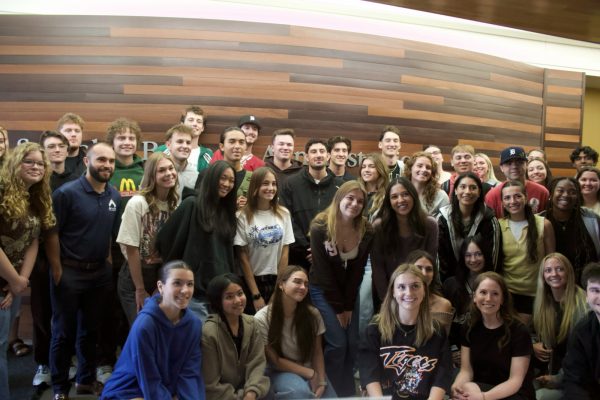Sustainability on and around campus
Energy usage is a main focus in 2020, and Oakland University is making an effort to become a greener community.
According to data from 2010 on OU’s website, energy usage costs about 4% of a full-time student’s tuition. While comparing all the statistics posted on OU’s website, both electric and natural gas usage have been increasing as the campus continues to grow
Students and community members should be aware of how to begin to reduce the energy usage around campus.
“Our goal is to have the most current and accurate information available for students,” Sean Dillion, Operations Analyst at OU, said. We would like to share tips for reducing energy usage so students feel more empowered.” Sean Dillon, operations analyst at OU, said.
According to Dillon, the goal for energy usage around campus is “Net Zero.” The university has set incremental goals that work with the cost associated with energy.
Energy usage is always a topic to be discussed, as the university has future goals in mind. According to Dillion, they plan to commission buildings with high energy usage and make changes to the lighting or insulation in them.
OU has already started moving toward more environmentally friendly buildings. The Human Health Building (HHB) was the first green building. It uses a geothermal heat pump and contains a cooling system powered by a solar thermal energy system,with the goal in mind of reducing the carbon emission and energy consumption and output on campus.
According to OU’s sustainability page, this solar thermal project is the largest in the U.S. It uses a variable refrigerant flow heat pump. The whole HHB project was given a $2.75M U.S Department of Energy grant to help fund the process and make OU a greener school.
In the article Health & Environmental Benefits of Solar Energy, they discuss how solar power can benefit the environment. “By going solar, you can reduce demand for fossil fuels, limit greenhouse gas emissions, and shrink your carbon footprint,” the article said.
OU takes steps in the right direction to support the campus’ sustainability. There is a Clean Energy Research Center (CERC) at OU that has a mission of reducing energy use by 40% in the Southeast Michigan tri-county region.
“My main focus, personally, is conservation,” Chris Kobus, director of engineering and energy education said. “I’m not big into just switching energy sources, I’m big into reducing energy usage, period.”
CERC has multiple clean energy research, development and educational activities within the group. They work by developing projects that contain biomass, solar and wind energy to achieve their mission of a clean energy future.
Reducing the amount of energy people use on a daily basis will mean a need for fewer power plants.
“The only clean energy, the 100% clean energy, there ever has been or ever will be, is the energy you’ve ever used,” Kobus said.
OU has also received a grant from DTE in Detroit to do an LED project around campus in 2012. The grant allowed for the street lights around Meadow Brook Rd. and the parking lots to be changed to more energy efficient LED lights.
“Going to LED lights that used to be metal halide lights all over campus … that takes the energy signature down quite a bit,” Kobus said. “The street lights and parking lights are on whether anybody’s in the parking lot or not.”
The CERC has done many projects in the past to improve life on campus and have planned for many to come.
Creating groups like this on campus are important to get students not just educated but involved as well, that way everyone is doing their part for a cleaner energy environment.
Another group that anyone is able to get involved with is the Faculty Staff Student Alliance for Climate and Environment (FSSACE). They talk about environmental issues and sustainability on campus and acts toward a greener university.
“OU is kind of behind the times on sustainability issues, in terms of a sustainability plan, doing various initiatives. We haven’t implemented a lot of sustainability initiatives on campus,” Mozhgon Rajaee, assistant professor in public health said “We got to do something, so let’s start brainstorming and coming together on how to do it.”
The meetings for the group help with educating about the problems that are happening on campus and in the community. They have presenters come in and discuss issues that can be improved and plan out possible solutions to the problems.
“I think the university itself, Oakland University, is now making sustainability a centerpiece of what it’s wanting to in terms of its reimagining OU initiative,” Lily Mendoza, professor of culture and communication said.
Anyone that is interested in joining the CERC should email Kobus at @[email protected] and anyone interested in getting involved with FSSACE should email Rajaee at [email protected].





